It’s silent, but for the crunch of rusted Pachinko balls underfoot. In front of you lies a shattered bowling ball, its marbled green skin split open and showing its ceramic composite layers like the rings of a felled tree. Huddled round a tarred-over concrete pillar, a pile of aerosol cans slowly fade on the dusty oil-stained ground.
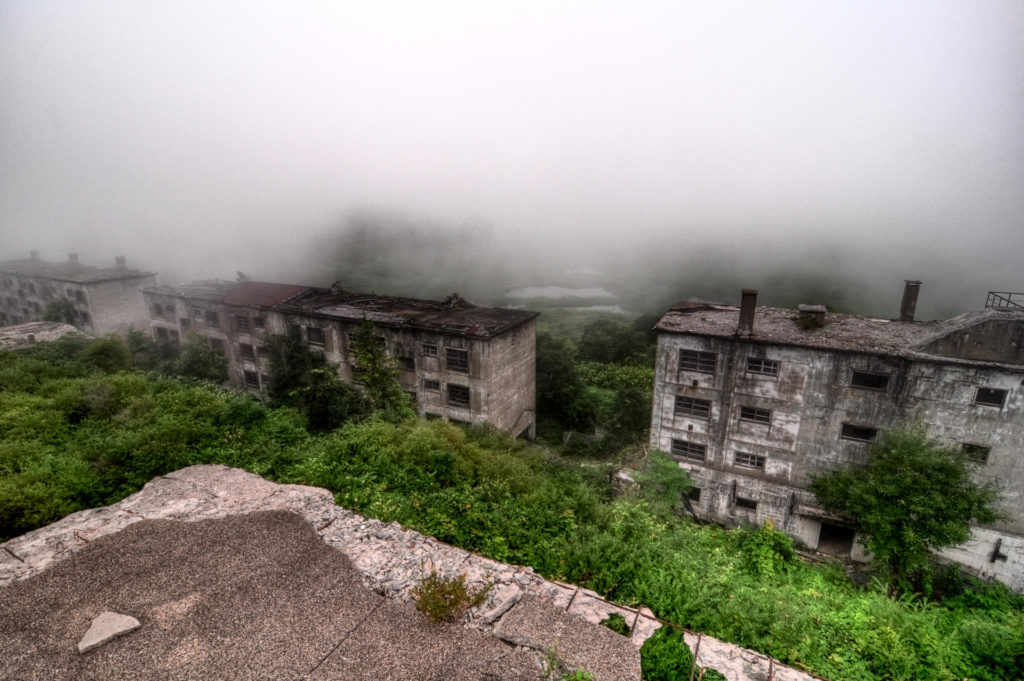
Somewhere ahead is the high sweet twittering of larks. You round the corner, and one of them swoops right by your face. You track it round the tumble-down lobby, over the graffiti of a big silver head on the far wall, past the skewed fridge with its doors hanging open, disappearing behind a central pillar where the nest must be.
You look across the car park through the weeds, past the pummeled old white transit van and the rubbled coils of escalator engines and realize you are visible to the outside world where traffic cops wave on cars with their red light-sabers. You drop in behind the central pillar and watch for a while as the larks buzz around you like dancers at a maypole, wrapping you up in their gossamer song.
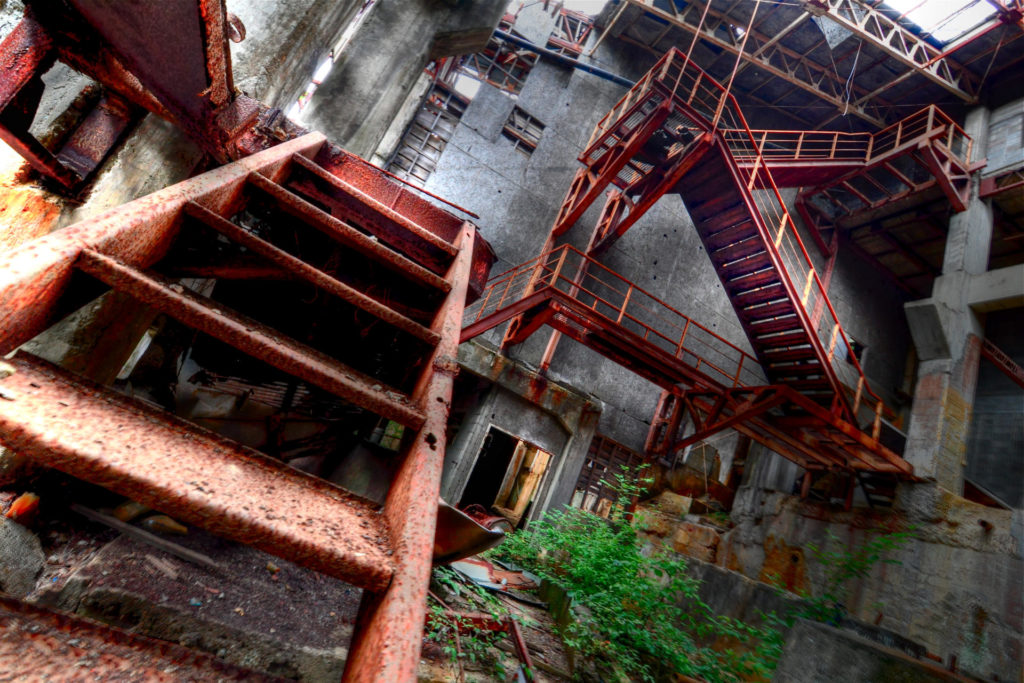
You’re in a haikyo.
Haikyo is the Japanese word for ruins, for abandonments, for the places that have fallen through the cracks, left by the wayside. Many of them are victims of the economic “bubble,” over-investments from the real estate boom left high and dry when banks called in the loans required to build them. Untouchable toxic assets impossible to sell and too expensive to demolish.
Others are remnants of Japan’s race to industrialization, mountain mines and factories whose chemicals bleached the nearby hillsides, scouring the neighboring towns with acid rain, only closing down when their underground seams gave out or environmental pressure to clean up grew overwhelming.
Exploring such places, known as “haikyo-ing” to a growing number of English-speaking aficionados, as “urban exploring” overseas, is a growing phenomenon in Japan. Look in the photography/weird section of any Japanese bookstore and you’ll likely find whole shelves dedicated to haikyo offering guidance and maps. Some books specialize in abandoned theme parks, some focusing in on dilapidated factories, ruins of war and so on.
During my nearly seven years in Japan I’ve had a passive interest in ruins. My first year here, almost by accident, I explored a fenced-off block of abandoned apartments and an old military base.About two years ago, I decided to get a little more serious.
I did my research, worked through all the available books, using my limited Japanese to decipher what information I could and put together my first expedition. I rented a car with two friends, booked hotels and headed off on long, winding mountain roads into the depths of Gunma and Nagano.
On that first trip we saw the shell of an abandoned theme park, a ghost mining town shrouded in mist, a smashed-up volcano museum swathed in thick snow and a derelict railway tunnel disappearing into darkness. The trip cemented my interest, and I’ve been regularly heading off in search of haikyo ever since.
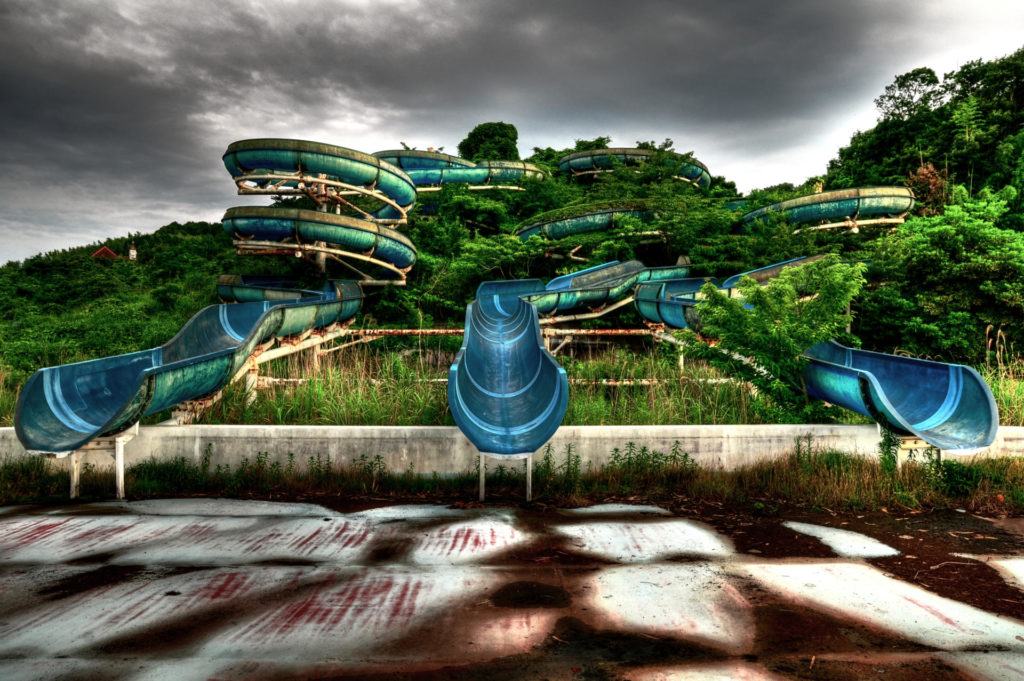
Why go? What is the appeal of a haikyo?
Perhaps the easiest way to explain why people are drawn to haikyo is to mention movies such as the “Indiana Jones” series and “The Goonies.” These films are about exploring hidden spaces, learning hidden secrets, in tombs and caves and ancient temples filled with booby-traps, sleeping mummies, occult ceremonial art and hidden treasure.
Of course, I don’t expect all of this from exploring haikyo. Though I have discovered cult-like underground vaults, gorgeous secret graffiti art in haunted hospitals, stumbled across mummified animals trapped in futon closets, found coins left in the offertory boxes of forsaken shrines and been spooked by monster-like screeching at night.
This spirit of adventure is a large part. Alpinists find it on their mountains; summit views the reward for hours of hard toil. Haikyo is rarely as physically challenging, though I have had to climb structures, dig into avalanche loam to find the lip of a cave mouth, battle through densely overgrown cliff-side roads and regularly trust my weight to rusted iron stanchions that could give way at any minute.
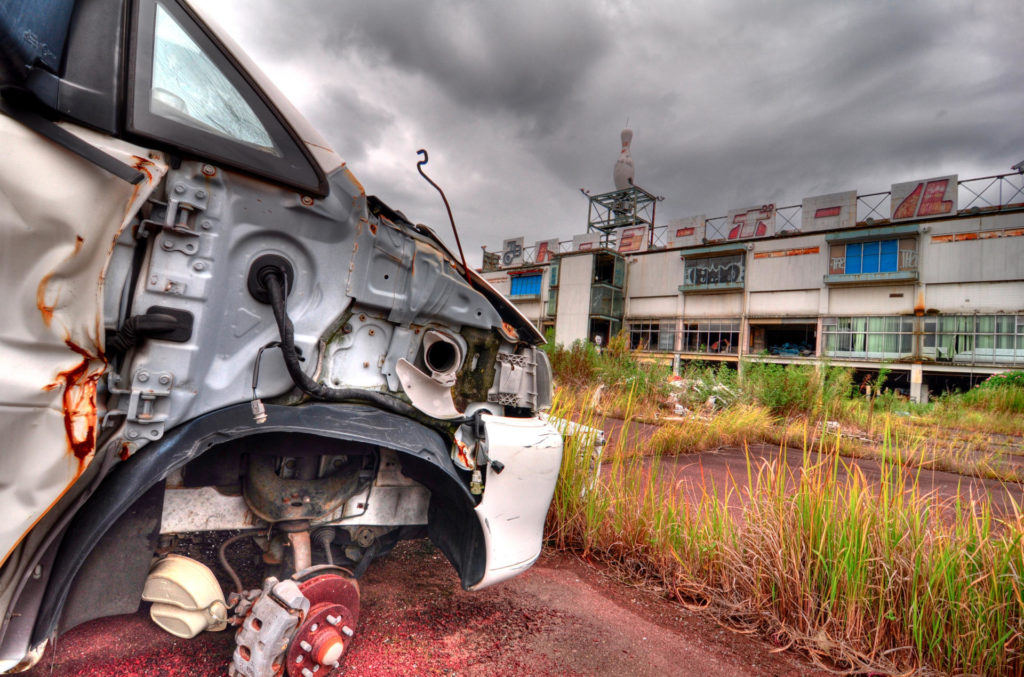
I’m not trying to compare haikyo to adventure sports such as mountain climbing, whitewater rafting or paragliding. Though it is exciting and it is an adventure seeking out remote places forgotten to most, poking around for clues of their past life, for the treasure trove of memories their walls harbor, seeking out the reasons why they were left to die.
This sense of adventure is not the only draw. There’s also a natural tranquility and beauty about these forgotten places. Shoots and vines creep in through cracked windows, mold grows in the cracked plaster of the bathrooms, trees coil their gnarled roots over floorboards, and leaves reach up to the sky through holes in the roof. This sense of desolation and repopulation, loss and rebirth, is almost spiritual. It’s a timeless theme as natural as the seasons.
I’ve felt it in deserted school houses while looking over the black and white photos of studious children cast aside on piles of musty stacked tatami, while walking through the rotten concrete hallways of long-evacuated mountain-top apartment blocks and while standing atop a mossy water flume slide in the middle of a grand but empty theme park.
This is what has drawn me to dozens of haikyo in Japan, some of which I’ll share with you in coming issues, others you’ll have to discover for yourself.
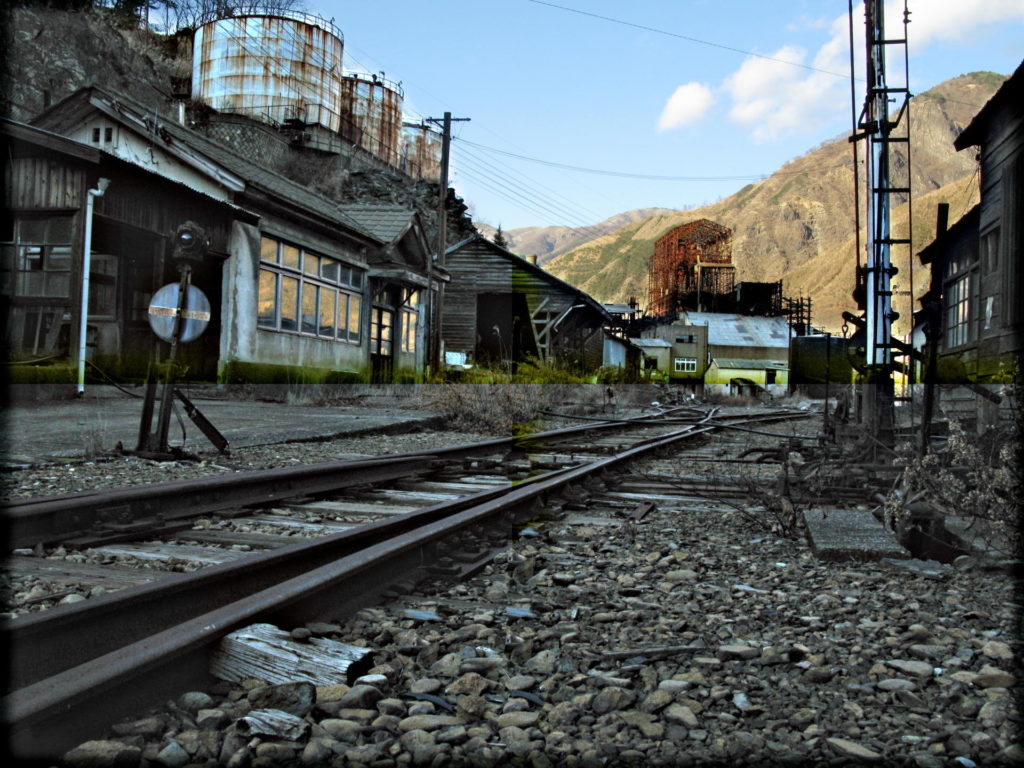
HAIKYO NOTES
What is haikyo? Haikyo are ruins. The Japanese characters for the word are: 廃墟.The first character 廃 means abandoned. The second character 墟 means ruins.
Where do you find haikyo? Haikyo can be found in cities or out in the Japanese countryside. Just within a 100-kilometer radius of Tokyo, I know of three abandoned hospitals, two or three abandoned theme parks, several train stations, a racecourse grandstand, two U.S. military bases, numerous hotels, love hotels, soaplands, schools, shrines, factories, restaurants, apartments, bowling alleys and museums.
Trespassing: It is important to note going to haikyo is technically trespassing. Someone always owns the land, whether they go to lengths to surround it by fencing and, strictly speaking, prosecution for such an offense is possible. Although I report on haikyo, I am in no way suggesting or advocating people visit haikyo. However, there are numerous haikyo books, TV shows and Websites out there, if you are interested in delving further into the world of haikyo.
Danger: Simply, haikyo can be dangerous. Accidents happen, and exploring a haikyo just increases your chances. If you’re in a remote area, there is little chance of mobile phone reception or of someone stumbling upon you while you lie in the rubble of a collapsed building. It’s essential to keep your wits about you, to check everything you plan to walk on, to carry a flashlight, to let someone know where you are going and, of course, not to go alone.




